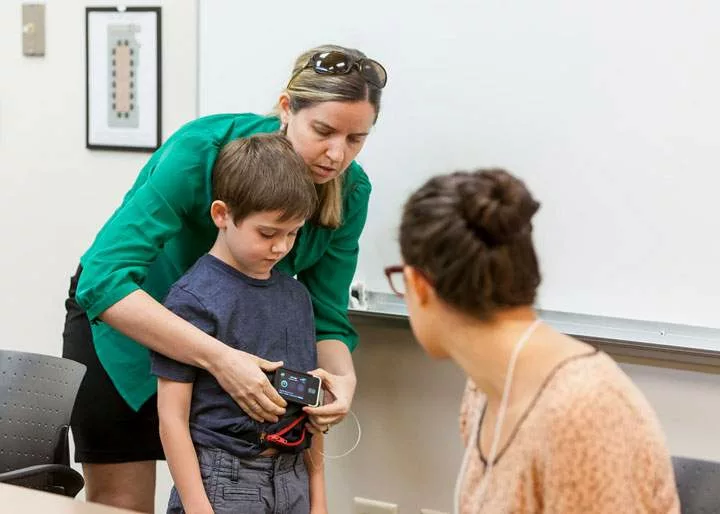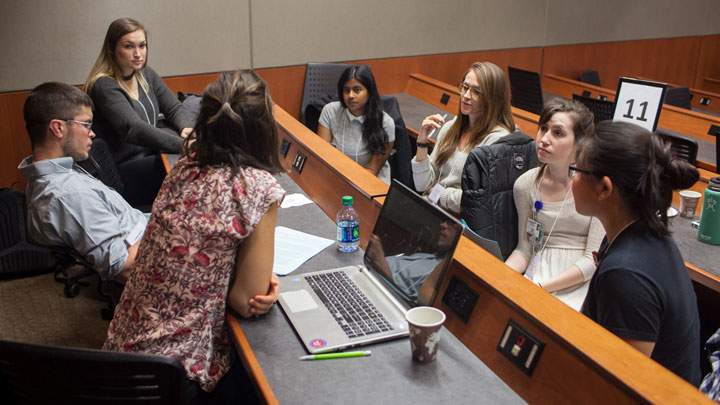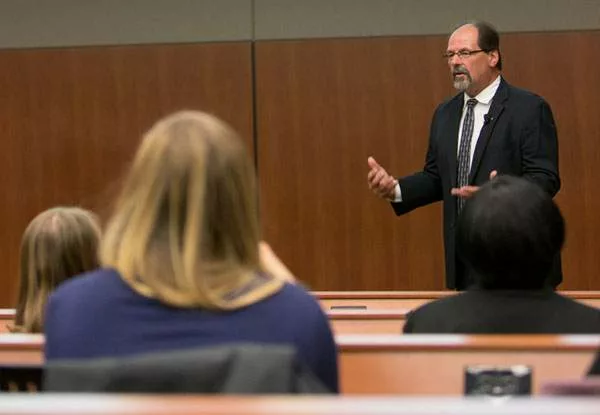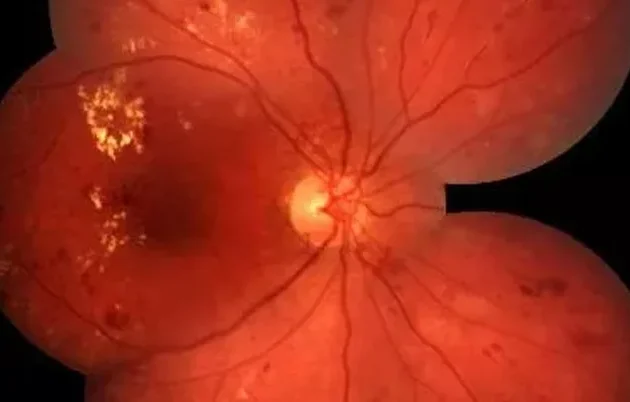When Crone began researching the subject, she learned that most medical schools’ orientation programs were based on academic preparedness and navigating the system. But she thought the focus should be elsewhere — on the patient.
Crone found Seibert’s initial request a bit daunting, but the solution came to her through an experience, similar to the encounters medical students would have.
When Crone was developing the program in collaboration with Elizabeth Tuschen, administrative program specialist, Crone was called to the bedside of her younger sister, who had just received a diagnosis of multiple sclerosis at a Chicago hospital.
“The doctor came into the room, sat down, put his feet up on a hand rail, and said, ‘I have all day to listen to you,’” she repeats.
His attitude resonated with Crone, who has learned from personal and professional experiences that patients want a positive connection with their doctors and nurses. A nurse practitioner at UW Health with 40 years of nursing experience, Crone has worked with the UW School of Medicine and Public Health’s curriculum for 17 years.
Research supports her idea to create Faces of Patients. For example, a 2010 study, “Doctor-Patient Communication: A Review,” published in The Oschsner Journal, outlined numerous studies and concluded, in part, that doctor-patient communication is a major part of health care.
According to the study, “most complaints about doctors are related to issues of communication, not clinical competency,” and “patients want doctors who can skillfully diagnose and treat their sicknesses, as well as communicate with them effectively.”
Crone says the impact that Faces of Patients has had on medical students gives her a sense of pride, adding that she often hears comments like, “I’ve never forgotten that first day,” when she runs into former students, often years later.
Fast forward to 2016, when the School of Medicine and Public Health implemented its ForWard curriculum, and Faces of Patients continues to be a critical part of the curriculum under the guidance of Scott Mead, MD ’02 (PG ’05), clinical associate professor, Department of Medicine. He is the curriculum thread director of ethics, health information technology, interpersonal and communication skills, patient care, professionalism and lifelong learning.
Taking It a Step Further
Virginia Snyder, PhD, PA-C, director of the US School of Medicine and Public Health’s Physician Assistant (PA) Program, recalls thinking, “Why aren’t our students doing a program like the Faces of Patients? It’s so powerful!”
With Crone’s help, the PA Program launched Faces of Patients in 2009. Responding to demand, program leaders now hold these patient-centered learning sessions once every year, when both first-and second-year students can attend.
In addition to the Faces of Patients program, in 2012, Snyder and her team added sessions of a similar format into the curriculum for PA students. Called Cases of Patients and held twice each semester, these are somewhat of a sequel to Faces of Patients. Fourteen patient cases about different medical conditions or study areas are longitudinally integrated into PA education, Snyder explains. Patients, families, and health care providers uniquely cover a particular area of focus, often spending one to two hours with students and PA faculty.
“Our students constantly want to see and hear from more patients. Cases of Patients allows them to delve deeper into one patient and/or family story,” she says.
In addition to learning to improve patient communication skills, this experience allows PA students to remember the value of the patient-provider relationship when they start interacting with patients in their training. Cases of Patients encourages PA students to explore psychosocial, cultural and emotional experiences with the patients and/or families.
In October 2017, the PA Program expanded its patient-centered curriculum to include students from the UW School of Nursing and UW School of Medicine and Public Health Master of Public Health Program. Cases of Patients is the first program of its type to include multiple parts of the care team. Like its model, these interprofessional sessions include patient presentations, followed by small-group discussions and sharing with the larger group. They allow students to learn about roles and responsibilities of other disciplines and how each approaches care of patients or populations within the content area.




